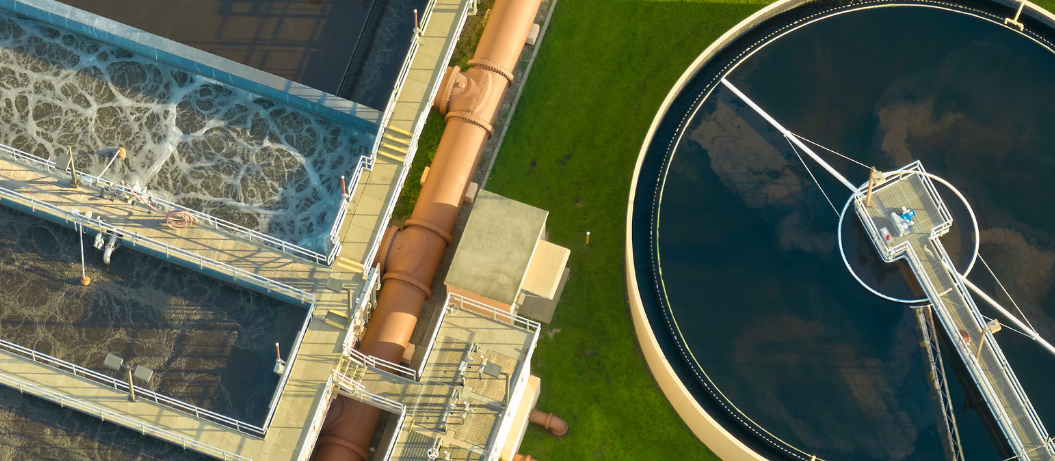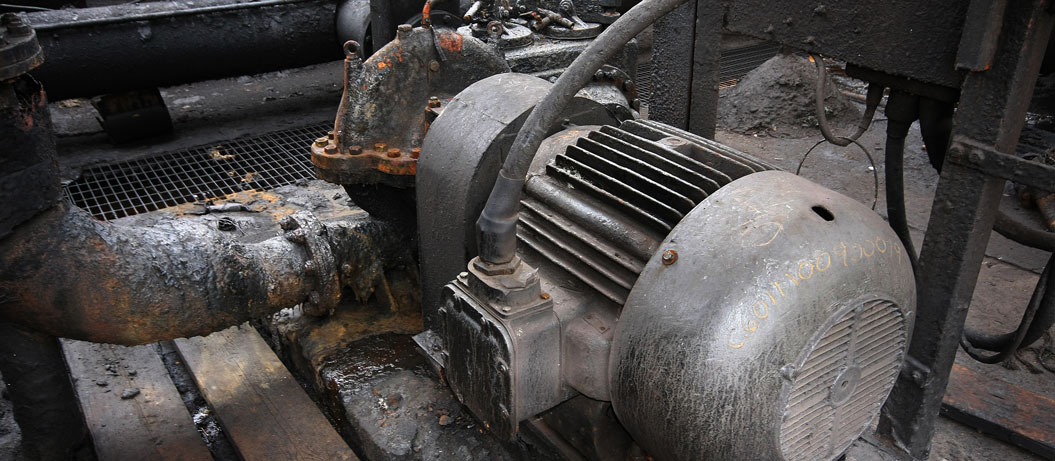Dewatering pumps, often submerged in a sump or hidden within some large machinery installation, are easily forgotten about. That is until something goes awry with them and you’ve got floods of water in all the wrong places.
By its very nature, site dewatering requirements tend to be all-or-nothing, and following a heavy rainfall event the demands on your staff, contractors and regional pump engineers can be overwhelming.
Any downtime can be costly in terms of lost production and efficiency, and uncontrolled water levels and flows can lead to many additional costs; loss of access, water damage to materials, plant and infrastructure, pollution risks, spillage containment, environmental damage, compromised health and safety…and on it goes.
A ‘run-till-failure’ approach is rarely seen as acceptable today.
A less obvious cost, but one that mounts up over time is the wastage of energy and asset life that a lack of ongoing maintenance brings. A significant danger to profitability and financial sustainability is a pump that works ‘OK-ish’ but consumes a lot more power to do its job, as wear and tear increases whilst efficiency drops.
Benefits of proactive maintenance
As mentioned above, a well-maintained pump will be optimised for energy efficiency, performing its task with as less input and the least cost of emergency intervention.
Reducing the number of reactive inventions can reduce exposure to health and safety risks, such as having a dewatered, safer site. A quarry manager was recently able to reduce the number of pump repairs by six times, meaning the incident risk was reduced by a similar amount.
By reducing unplanned and costly pump downtime, you are helping to increase the reliability and resilience of the pump-dependent processes – increasing production up time and profitability.
Proactive inspections and monitoring provides you a clearer picture of the state of your assets, enabling you to plan staff shifts and replacement part deliveries without the cost of ad-hoc overtime and uncertainty.
Pump manufacturers like Atlantic Pumps design around any potential problems expected with the target application. Designing pumps with maintenance in mind with features such as automatic greasing and ergonomic guarding, our pump engineers focus on ease of inspection and faster servicing. As a result, much time and cost can be saved by keeping to a regular proactive maintenance program.
In any system, when one part wears it puts more pressure on other components. Extreme examples include shaft seals in submersible pumps, or bearings that keep the motor and shaft in alignment. Relatively inexpensive to replace, if these parts are left to fail it can lead to a complete rebuild or even a write-off of the entire pump. Prevention is better than cure!
Planned maintenance schedules help avoid interruptions to the workflow, ensuring the pumps are operating at full performance when they are needed. By planning in maintenance ahead, site managers can better coordinate engineer access with daily operations.
Pro-active management of pump wear and tear will reap rewards by being able to carry out dewatering activities whenever you need, without having to worry that a pump fault could impact daily output and customer service.
Methods & approaches
Various models and approaches to maintenance have been developed, with over-laps, merges and differences. Learning about them all can be helpful in determining your own practical maintenance system.
PPM
Planned preventative Maintenance (PPM) is a system of scheduled maintenance tasks. The interval is determined by a predictive model based on knowledge of the pump and its duty. Manufacturers’ recommendations for the specific application are best to follow, although operators may decide to do more frequent checks based on their site knowledge and experience.
PPM is sometimes referred to as Planned Predictive Maintenance, yet the predictive side is usually based on worse-case scenario for the general application it’s designed for. So for example, the emphasis on planned maintenance would see the pump parts replaced after a specified number of working hours, or every so many months. Based on and increasing the MTBF.
PPM’s defining feature is a consistent, routine program of standardised maintenance tasks.
A PPM schedule for a centrifugal pump might look like:
- Daily check of discharge flow rate.
- Greasing according to the pumps schedule
- Gland adjustment
- Replace impeller and volute lining, and re-fit gland seal every 6 months
- …etc
CBM (Condition based monitoring)
Whereas PPM follows a set checklist/wear part replacement and fixed interval schedule, condition- monitoring uses data collection to predict when a part will need replacement or service.
Done well, this data-driven approach can extend asset lifetime, saving the waste of unnecessary interventions, whilst catching issues before their effect on operations becomes a problem.
As our aim is the prevention of problems and ‘fire-fighting’ scenerios, it requires calibrated and accurate measuring tools to catch things early; by the time the variance can be detected by human senses, we’re starting to lose the benefits of pro-active maintenance. For pump fault-finding see elsewhere on our website for tips on diagnosing issues with submersible pumps and centrifugal slurry pumps, or give us a call if you need help fast!
Data management records are vital for understanding patterns, enabling pump servicing needs to be forecasted. This gives confidence when reporting and communicating to management and helps realistic budgeting.
Data sources that are frequently used to monitor pump condition include:
Energy consumption
A spike or unexpected increase in energy draw indicates a problem, e.g. surface wearing of wet-parts, partial blockage/restriction, or incorrect lubrication leading to bearing issues.
Check the pump curve (available from the manufacturer) against your actual flow rate and pressure (total dynamic head, TDH) requirements. Your pump’s best efficiency point (BEP) is where the flow rate and head (pressure) is at it’s ideal for the particular model. Extreme ends (low or high) of the curve significantly increase energy consumption amongst other issues.
Temperature (Heat) and hotspots
Heat is often generated by moving parts (friction) or along the electrical wiring where resistance is present. An increase in heat indicates an issue with the affected part. In the case of electrics, heat buildup can be either excessive power draw or extra resistance (e.g. damaged wiring or lost contact). With mechanical parts, its highly likely a lubrication issue or imbalance/misalignment that is causing friction heat.
For timely detection that allows for planning the specific repair or replacement, an accurate thermometer and constant (or at least frequent) monitoring is required. Thermal imaging and other non-contact instruments are often used for pump temperature monitoring.
Excess heat can lead to a snowballing of problems as materials expand, rubber linings start to melt and rotating parts bind – creating more heat and friction, and motor overload.
Oil/lubrication level
Around three-quarters of equipment failures are caused by lubrication issues. Check oil levels frequently and top-up when required. An auto-greaser can save a lot of time, although checks are still needed. Gland seals and bearings particularly need consistent lubrication according to the manufacturers recommendation to prevent wear and friction.
Taking it to the next level, analysing the oil and lubricant cleanliness can indicate the wear condition of certain internal parts, although pump parts that are easily accessible are more often inspected directly for wear.
Noise
A banging or knocking noise within the liquid flow, (can sound like marbles being pumped) needs urgent intervention as it is likely cavitation – a phenomenon that can cause a surprising amount of pitting and wear damage to wet-part surfaces.
Vibration
Most types of pumps create a steady and low amount of vibration, but any increase in vibration needs to be looked at. Other than impact damage that has caused misalignment, it is likely that the bearings, seals and/or shaft are wearing out.
Measuring vibration for the purpose of preventative condition monitoring requires a calibrated monitor. Comparing readings from previous data can aid in predicting and planning schedules for replacement.
Misalignment of motor and shaft axis is a common reason for high vibration, due to an unbalanced rotation.
Flow rate/volume
Pumps should be set to run at a speed that remains near their BEP, switching off when supply levels or demand is low. Flow monitor data, along with energy consumption, will give insights into pump performance, as well as being useful for other water management purposes.
Combinations are valuable in diagnosing evolving issues. For example, high noise could be caused by a number of things, but coupled with reduced discharge it points towards cavitation.
Wear-rate
At a micro-level, it can be said that as soon as a pump starts to operate, it starts to wear. With wear-resistant pumps such as SlurryPro and Audex, wear will not be visible to the naked eye for a long time due to material selection.
Risk-based maintenance intervals
With parallels to the health & safety risk assessment approach, risk-based maintenance (RBM) and risk-based inspection (RBI) takes into account both severity and likelihood. For example, it might be established that a low-cost, easily replaceable pump that doesn’t support a vital process is low risk. Therefore, this might not need checking in such a detailed way or as often as a large pump that is crucial to plant uptime and site resilience.
Condition monitoring can help support a RBM approach by providing data for establishing the likelihood of failure and MTBF (mean time between failures).
Spare capacity (Pump redundancy)
Many sites which rely on constant pump uptime for safety and the ability to keep operational, (such as mines) operate a principle of ‘pump redundancy’, or ‘duty-standby’.
Duty-standby means having two pumps installed, with operational cycles switching between the two strategically. With one on standby (perfect time for maintenance), the other is on duty to keep the system running.
Although having more than one pump for a single task might sound asset-heavy, it generally leads to a longer lifetime for each asset – especially when it helps improve maintenance.
From an energy consumption perspective, there is no difference between having a single pump and more than one for redundancy, as only one is running at once.
Tools and assistance to make your maintenance easier (and more likely to happen)
Technology is becoming more commonplace, cost-effective and capable, particularly with the accessibility of the IoT (Internet of Things) and AI (artificial intelligence).
Here are some tools to make your maintenance management a breeze:
CheckProof – the app-based checklist and reporting tool
Designed for remote asset maintenance and reporting, the mobile-friendly CheckProof app is a highly customisable system. Ditch the paperwork, frustration and uncertainty with the app that was developed to enable any site operative to receive PPM task lists and report back via their mobile phone.
CheckProof was developed for quarries originally and due to its adaptability is now used across many industries. Developed by CheckProof A.B. in Sweden, it integrates with most of Atlantic Pumps’ equipment out-of-the-box.
Senteos – the cloud-based live reporting and command interface
Another one from the quarrying and mining industry which is finding its way into other areas like the water industry.
Senteos is a robust and secure platform for connecting data sensors in remote locations to your desktop or phone. Set up email or text alerts to nominated staff when pre-set parameters are reached, automatically record data, and create pre-programmed actions to prevent limits being breached.
No internet coverage onsite? No problem. Atlantic Pumps can install a solution connection to connect dead-spots to the cloud.
Atlantic Pumps – Your expert pump condition monitoring partner
Some pump operators choose to delegate all their pump condition monitoring and maintenance to Atlantic Pumps’ specialist engineers, whilst others have them perform condition monitoring at set intervals to support their own in-house engineering team.
Atlantic Pumps understand your priorities when it comes to pumps; uptime, increased life-span and decreased TOTEX (total lifetime expenditure).
We also take a sustainable approach to our work and are committed to reducing energy waste from pumps. Our expert knowledge allows us to reduce energy usage by 20% on the average site!
Call us today on 0808 196 5108 for more information.
 July 12 2024
July 12 2024 7 min read
7 min read


